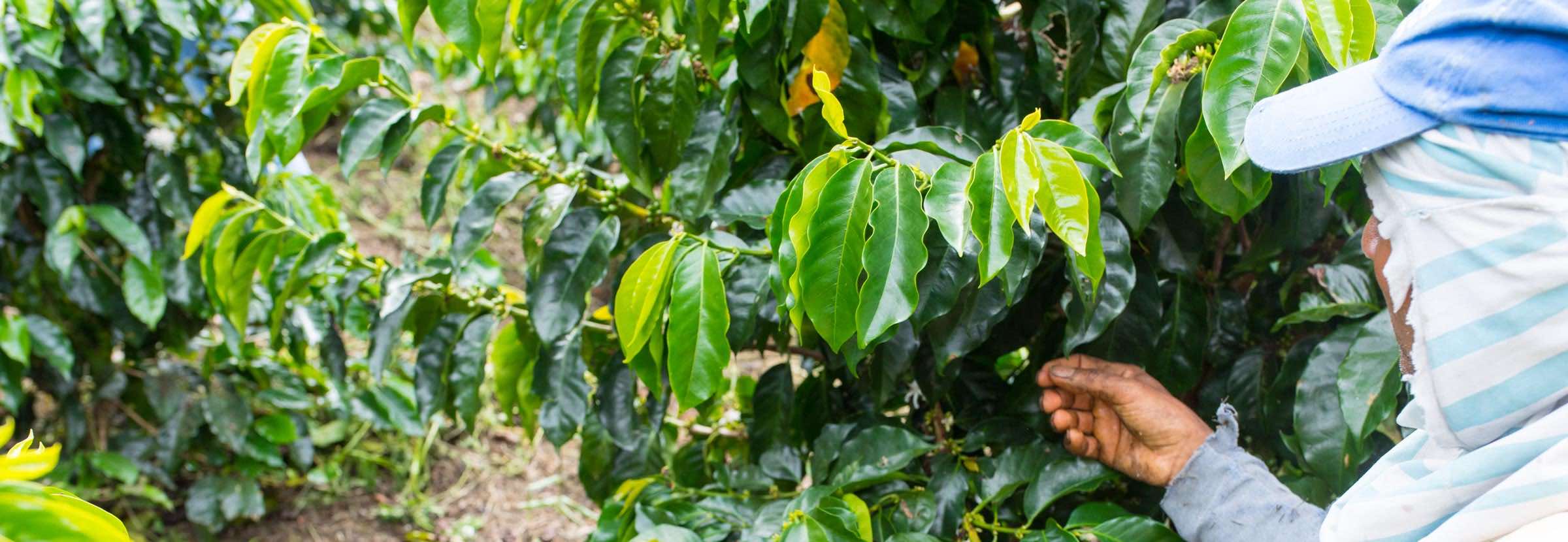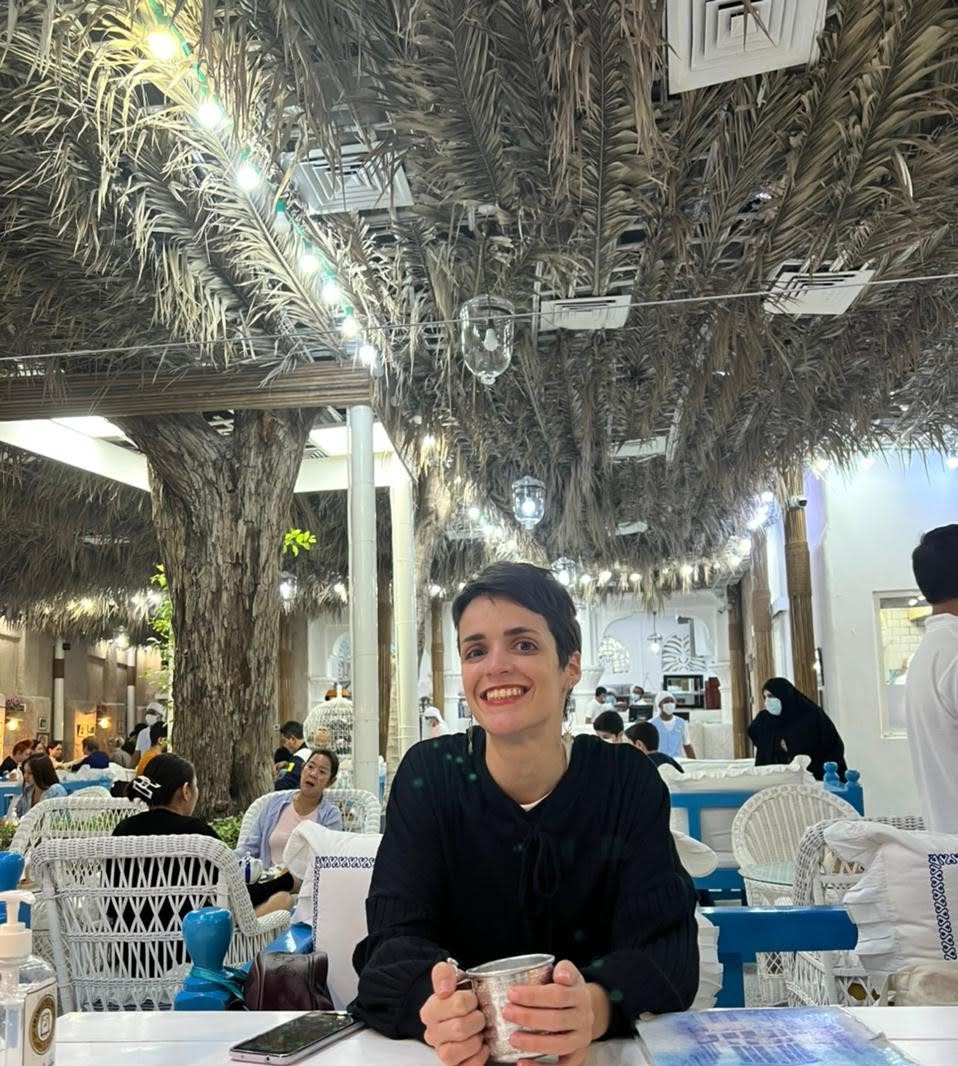What is coffee leaf seltzer?
The popularity of ready-to-drink (RTD) coffee is impossible to ignore. According to a 2023 market research study, the value of the global RTD coffee market will reach US $42.36 billion by 2030.
Although canned lattes and cold brew are popular options in this market sector, demand for functional RTD coffees is also growing – including coffee leaf seltzer. As the name suggests, these drinks are made using leaves from coffee plants, which means they contain no caffeine.
So how is coffee leaf seltzer made and what does it taste like? And more importantly, can it help coffee producers diversify their income? To find out more, I spoke to Josh Tarlo, founder of Headstand, and Carlos Pola, a producer in El Salvador. Read on to find out what they had to say.
You may also like our article on coffee leaf tea.

How do you make coffee leaf seltzer?
Before explaining coffee leaf seltzer, it’s important to acknowledge the cultural significance of coffee leaf tea. In countries like Sumatra, Ethiopia, Jamaica, India, Java, and Sudan, people have been preparing coffee leaf tea for hundreds of years.
In Ethiopia, for example, coffee leaf tea (referred to as kuti by local Harari communities) is made by boiling coffee leaves in water for around 30 minutes. People also add sugar or salt to taste, too.
Josh Tarlo is the 2018 UK Barista Champion and 2013 Canadian Brewers Cup Champion. He tells me how he started Headstand – a UK coffee leaf seltzer brand.
“I had heard about coffee leaves being brewed like tea and I was interested,” he says. “In 2018, I spoke to Carlos Pola, who I was buying coffee from, and asked him about making coffee leaf tea so I could use it as part of my signature drink round at the World Barista Championship.
“When I tasted it I knew I needed to use it, it was delicious,” he adds.
However, he explains that it wasn’t until the pandemic that he decided to add coffee leaf tea extract to carbonated water.
“One day it clicked that coffee leaf tea would make a delicious no added sugar seltzer,” Josh says. “I then realised that we can develop a market for it and help diversify producers’ income.
“I spoke to Carlos again and we came up with different ways to process the leaves,” he adds. “After some trial and error, we created a method and I developed Headstand as a brand.”
Josh explains how Headstand makes its coffee leaf seltzer.
“We import vacuum-packed leaves and steep them in cold water for 24 hours,” he says. “From there, we strain the leaves and mix the leaf extract with flavourings, and then carbonate and pasteurise the drinks.”
What does it taste like?
There are some comparisons between coffee leaf tea and green tea. Coffee leaf tea generally tastes sweeter than green tea, contains less caffeine, and has a higher level of antioxidants – which can have a number of health benefits.
When added to a seltzer – a carbonated beverage made by adding carbon dioxide to water – coffee leaf tea can work as a natural sweetener. In turn, coffee leaf seltzers can be a refreshing low-calorie beverage option.
Coffee leaf seltzers can also be flavoured. Headstand, for instance, sells yuzu and ginger flavoured drinks, which also includes other natural ingredients such as chamomile, ginseng, and L-theanine. The brand also recently launched three loose coffee leaf blends which are brewed similarly to tea.
“Because coffee leaf tea is a new concept for many consumers, we need to educate them about what it is and what it tastes like, as well as its health benefits and how it can benefit coffee producers,” Josh tells me.

How big is the market for coffee leaf seltzer?
As the craft RTD coffee market grows and diversifies, it’s likely that coffee leaf seltzer will become more popular in the coming years.
Carlos believes there is a lot of market potential for coffee leaf seltzer.
“Josh and I have been carrying out experiments with processing methods for a long time now, and some of them have been great successes,” he explains. “Coffee leaf tea was a new and different experience for us.
“It’s a refreshing and healthy drink, as well as a way for coffee producers to diversify their revenue,” he adds.
That’s not to say however, that there aren’t challenges when exporting coffee leaves. Carlos stresses the importance of understanding the different regulations and permits needed to export them to different countries.
“The biggest issues we face are knowing which permits to apply for, monitoring any regulation changes, and paying higher costs for air freight,” he says. “Overall, it’s been a big learning curve.”
Despite these obstacles, it’s clear there is space in the RTD market for coffee leaf seltzer. Consumers – particularly younger generations – are continuously demanding more convenient coffee products. Moreover, they are increasingly placing more importance on health and wellness when purchasing RTD coffee drinks.
“Whether it’s plant milks or functional drinks, what we consume and how it affects the wider supply chain matters to a lot of people,” Josh explains. “I see coffee leaf seltzer as part of a movement that is changing our food systems for the better.”

How can producers benefit?
Although coffee (and potentially other cash crops) is usually the biggest income generator for the majority of coffee producers, selling coffee leaves can be a boost in revenue for some – as long as they have the right level of support and resources.
As all coffee plants produce plenty of leaves, farmers are already able to start selling a new product and diversify their income. There are, however, still some challenges which producers would need to overcome to sell their coffee leaves effectively, including:
- Knowing how to process and dry leaves correctly for export
- Understanding the logistics of exporting coffee leaves to different countries
- Knowing when and how to remove leaves from branches without damaging the plants (similar to coffee flowers which can also be upcycled)
A way to better support the coffee industry?
Josh believes that selling coffee leaves could be a viable way for more producers to increase their income.
“In terms of popularity, coffee leaf seltzer could become the next kombucha or CBD-infused coffee drink,” he says. “But more importantly, it presents an opportunity to help increase the standard of living for coffee producers around the world.
“What’s more, selling coffee leaf seltzer is a way for coffee shops to express their values around sustainability and create a more ethical supply chain,” he adds. “Covid-19 showed us how fragile our supply chain system can be, and so many coffee producers experienced a very challenging time.
“Ultimately, it means we need to create new ways of strengthening and adding value to the whole supply chain – from producers to consumers,” he concludes.

Demand for RTD coffee beverages has never been so high, and is only going to increase in the coming years. And with health and wellness becoming a bigger focus in this market segment, it’s inevitable that consumers will want more options.
Coffee leaf seltzer certainly has potential to become more popular, especially in the specialty coffee sector. But with the numerous logistical hurdles associated with exporting coffee leaves, it may take some time.
Enjoyed this? Then read our article on how specialty coffee can push for a circular economy model.
Photo credits: Josh Tarlo, Headstand
Perfect Daily Grind
Want to read more articles like this? Sign up for our newsletter!





